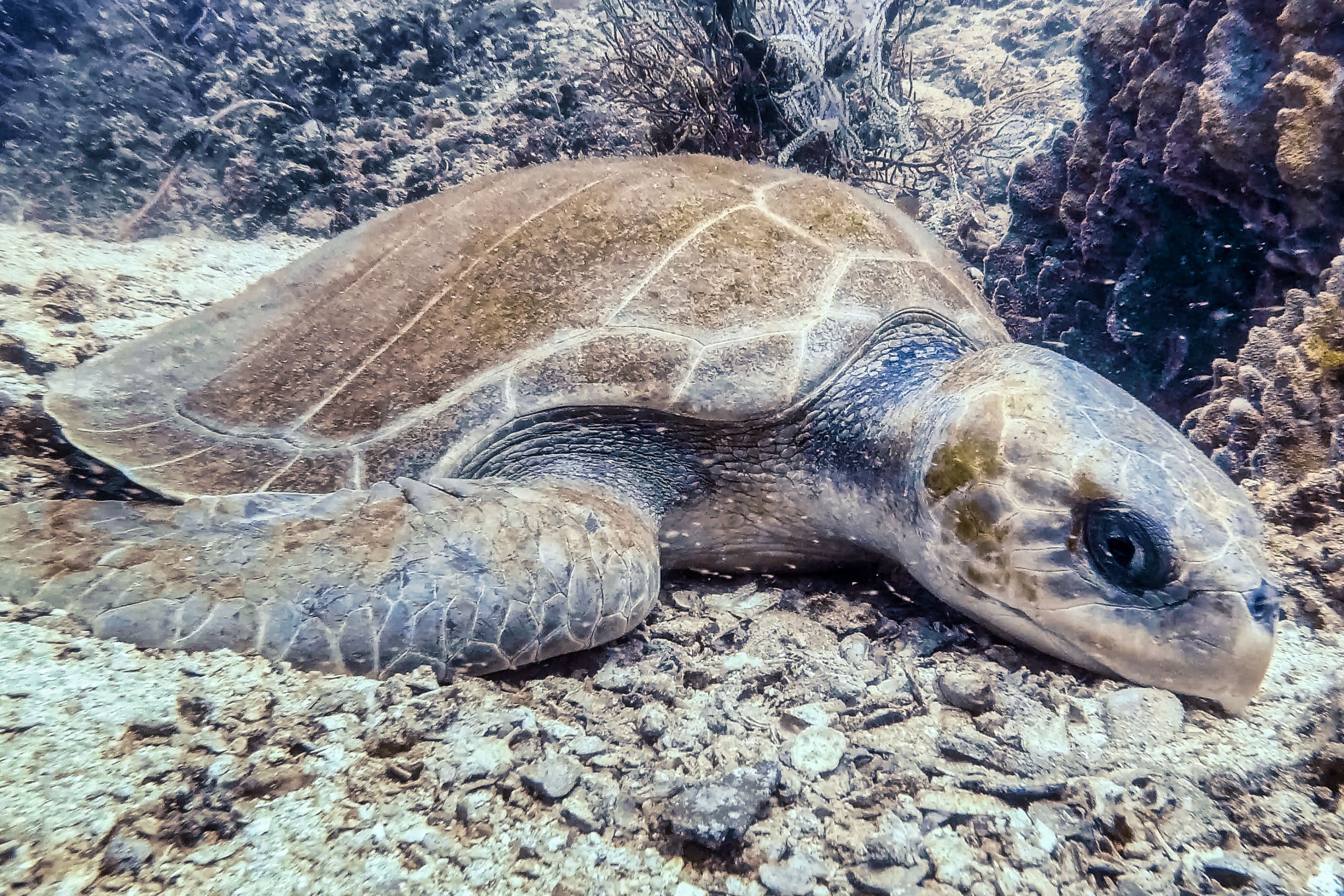Kemp's ridley sea turtle
(Lepidochelys kempii)

Description
Kemp's ridley sea turtle (Lepidochelys kempii), also called the Atlantic ridley sea turtle, is the rarest species of sea turtle and is the world's most endangered species of sea turtle. It is one of two living species in the genus Lepidochelys (the other one being L. olivacea, the olive ridley sea turtle). Kemp's ridley is the smallest of all sea turtle species, reaching maturity at 58–70 cm (23–28 in) carapace length and weighing only 36–45 kg (79–99 lb). Typical of sea turtles, it has a dorsoventrally depressed body with specially adapted flipper-like front limbs and a beak. Kemp's ridley turtle adults reach a maximum of 75 cm (30 in) in carapace length and weighing a maximum of 50 kg (110 lb). The adult's oval carapace is almost as wide as it is long and is usually olive-gray in color. The carapace has five pairs of costal scutes. In each bridge adjoining the plastron to the carapace are four inframarginal scutes, each of which is perforated by a pore. The head has two pairs of prefrontal scales. These turtles change color as they mature. As hatchlings, they are almost entirely a dark purple on both sides, but mature adults have a yellow-green or white plastron and a grey-green carapace. Kemp's ridley has a triangular-shaped head with a somewhat hooked beak with large crushing surfaces. The skull is similar to that of the olive ridley. Unlike other sea turtles, the surface on the squamosal bone where the jaw opening muscles originate, faces to the side rather than to the back. They are the only sea turtles that nest during the day. The distribution of L. kempii is somewhat usual compared to most reptiles, varying significantly among adults and juveniles, as well as males and females. Adults primarily live in the Gulf of Mexico, where they forage in the relatively shallow waters of the continental shelf (up to 409 m deep, but typically 50 m or less), with females ranging from the southern coast of the Florida Peninsula to the northern coast of the Yucatán Peninsula, while males have a tendency to remain closer to the nesting beaches in the Western Gulf waters of Texas (USA), Tamaulipas, and Veracruz (Mexico). Adults of L. kempii are rarely found outside of the Gulf of Mexico and only 2-4%. from the Atlantic are adults.
Taxonomic tree:







